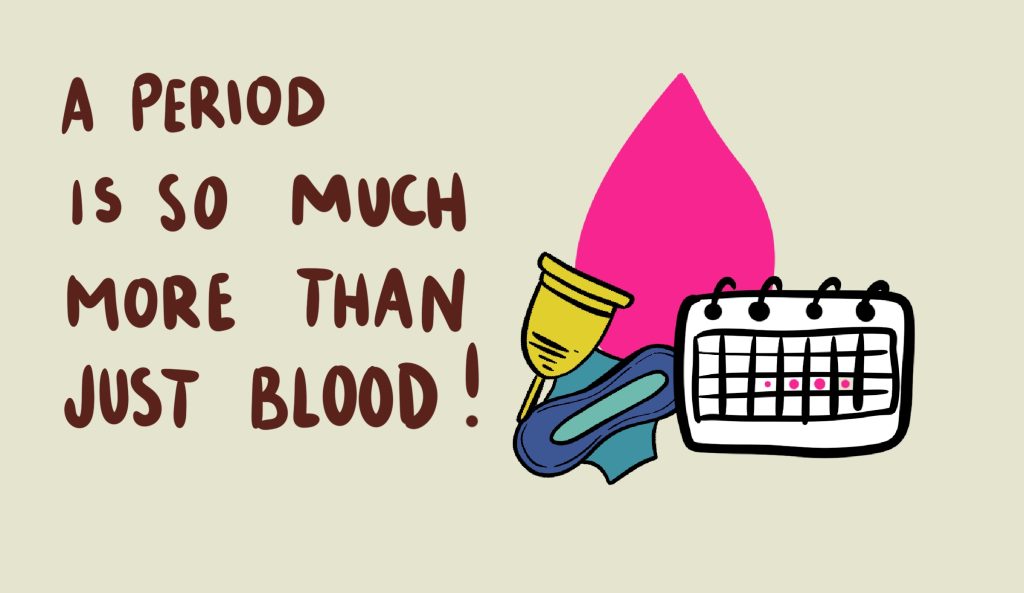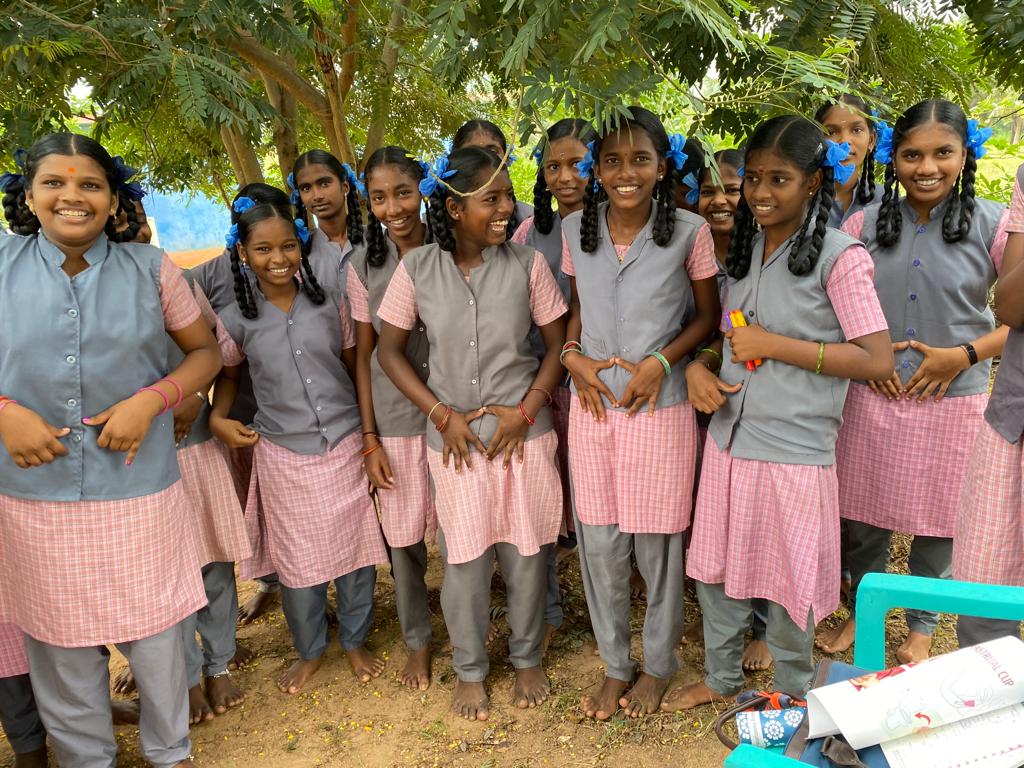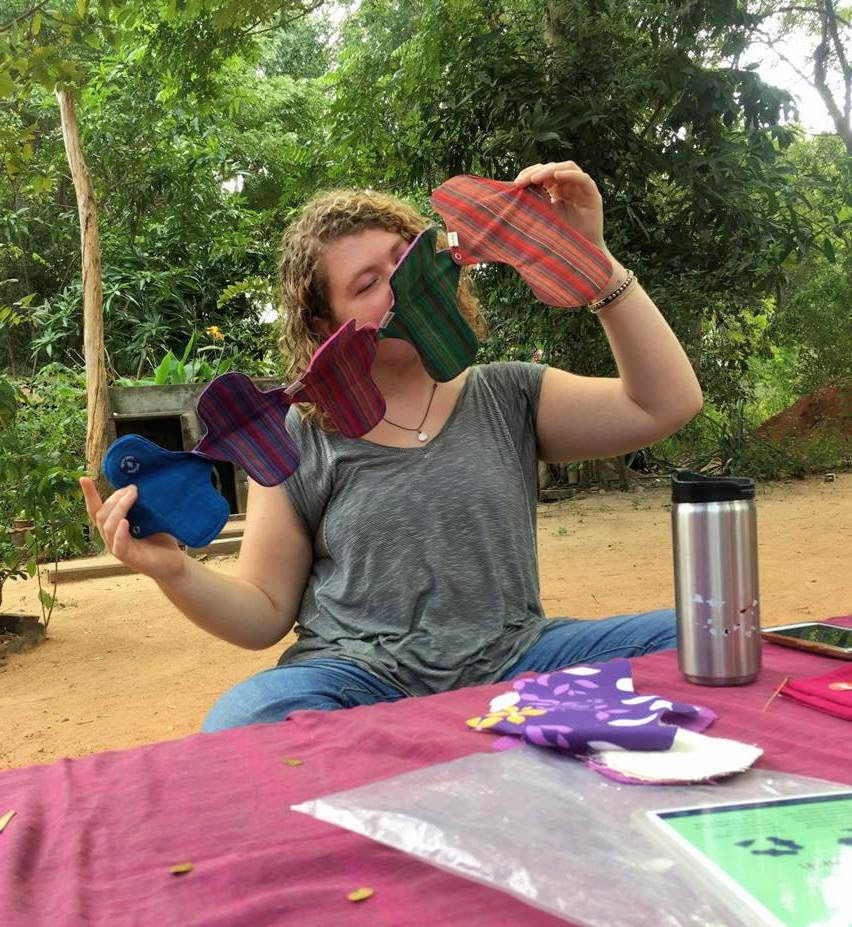You’ve become interested in using a menstrual product that is healthier for the environment and for your body. You are considering or already made the switch to washable cloth pads. But what about choosing a washing detergent to clean your cloth pads? It should be effective, but it should also not be harmful for your body and our environment, right?
In blog series “How to wash my cloth pads?” in PART 1: Washing routine for cloth pads we shared step by step washing instructions for the cloth pads with some extra tips.
Now in PART 2: Choosing a Soap, we discuss on using a soap that is safe for your body and the environment and how important that choice really is.
Next in PART 3: The Cloth Pad Soap, we will introduce a soap made by our friends at Probiotics House from Auroville.
Choosing safe soaps for cloth pads: Making the switch to eco friendly healthy products
Our customers frequently ask us what soap to use to wash our cloth pads. We generally recommend a natural, organic soap. Why is that? The answer is straightforward: We have designed a menstrual product with care for your health and the environment in mind; using organic cotton and offering an alternative to sanitary products with harmful toxins.
Evidently, the products for washing your cloth pads ideally follow the same focus: not to harm your body and not to harm the environment.
“If you are interested in cloth pads, you are probably already thinking consciously about your product choices.”
We discussed possible environmental and health effects of one-time-use sanitary products in our blog articles: Toxic Chemicals in Disposable Pads & Tampons and Convenience at What Cost. They might appear easy to use, but can contain harmful toxins that can cause allergic skin reactions, disrupt our hormonal system, affect reproductive health and have been linked to cancer. Disposables might appear convenient, but the effects of landfills and toxic burning fumes speak a different story. Waste products do not disappear just because we cannot see them. The toxins and microparticles can enter our skin, lungs and foods
When it comes to making choices about our everyday cleaning products, such thoughts might have previously skipped our attention. After all, they are associated with “cleanliness”. However, what is there to say about “the dirt on the soap”? This article doesn’t give all the answers, but we can start the conversation:
Soap cleans, so it is “clean”, isn’t it?
Let’s take a look at what “clean” actually means. Have you ever asked yourself what is actually inside your soaps, shampoos and washing detergents, Dettol, Surf Excel, Ariel, Henko and stain removers like Oxy-Action or Oxy-Clean, Vanish, etc., which are advertised in the media with happy faces for the “clean” results they produce?
- It is not mandatory in all countries for producers to disclose the contents of their products promoted as “safe for cleaning”. Not all governments take sufficient care to ban harmful contents. YOU are the one who is going to have to make the healthy eco-friendly choice. Learn more in this video “The Story of Cosmetics“
- Most of us have probably never researched the possible environmental and health effects of listed ingredients, such as parabens, phosphates, phthalates, sodium lauryl sulphate, formaldehyde, synthetic fragrances, colours, stabilizers, preservatives, microplastics, palm oil, etc.
- Manufacturing companies that use harmful ingredients produce toxic wastewater.
- Many cleaning products come in plastic packaging that ends up as waste.
- We ourselves produce wastewater every day when we use washing detergents, soaps and shampoos to clean our clothes, bodies and households!
- Harmful soap residues stay on the item we wash, even after rinsing! How can something become “clean”, which we “clean” with that?
- The chemicals and packaging end up in our streets, landfills, water, rivers, oceans, plants, animals, our food and ultimately our own bodies.
We have to break up this toxic relationship. Our product choices determine what enters our environment, as the UN wonderfully points out in their video “Are you in a toxic relationship?”
When we use these kinds of “cleaning” products to wash ourselves, our clothes and our living spaces, are we really “cleaning” here?
Learn more about the importance of your product choices in this video Environmental Impacts of Detergents
Let’s talk about foam
Foam is what we see in advertisements and what we associate with cleaning since our childhoods. We might feel that bubbles prove the effectiveness of a soap. However, this is a misconception: There is no link between the amount of foam a product generates and how well it cleans. Products can contain added foaming agents to enhance the emotional “consumer experience” of cleaning, but that have no actual cleansing benefit.
In fact, the more a product foams, the more water is needed to remove all soap residues and rinse the foam off our clothes, our bodies and household surfaces. Through this, large amounts of clean water are wasted and dumped down the drain…along with the “cleaning” foam.
Bottom line: We don’t need all that foam. We can save time, water and the environment by making the switch to low foaming natural cleaning products.
Why is your soap choice so important for your cloth pads? – Your skin
Your product choice is not just about preventing toxic wastewater. It is also about the substances you get in touch with directly. Your hands will touch the soap while washing. Well…and we are speaking about sanitary pads which have direct contact with your skin: This is also about possible residues in the cloth after washing.
Taking care of the sensitive skin in your genital area was probably one of your reasons to make the switch to cloth pads, away from disposables, and to avoid the possible health effects of harmful chemicals. The genital skin is especially sensitive to absorbing toxins, as we discussed in our blog article Toxic Chemicals in Disposable Pads & Tampons So then: It makes plain sense to also use a soap that doesn’t contain harmful substances!
Since YOU are the one who is going to have to make the healthy and sustainable choice, you can do some research to get to know natural organic soaps and see what is available where you live.
Keep it clean!
Click here to shop
It’s a practice of our everyday life: We use sanitary pads to catch our menstrual blood and keep our clothes clean. We use reusable washable cloth pads to avoid waste and keep our environment clean. We can use eco-friendly soap to keep our cloth pads and the environment clean at the same time. Let’s take the conversation further and reflect on the choices of our everyday cleaning products, to keep our planet clean. Truly clean.
Coming up in PART 3: The Cloth Pad Soap made by PROBIOTICS HOUSE.
By Stephanie – Eco Femme










Comments (0)
can i use surf excel to clean the pads?
You can, absolutely. You wanna treat and wash a cloth pad just like your underwear. So you can use Surf but we recommend using natural soap (like the one we have on our online shop) because it’s chemical-free, so no chemicals come in contact with your vagina. Also, natural soap could preserve longer the fabric of the pad and last longer. We hope this helps 🙂